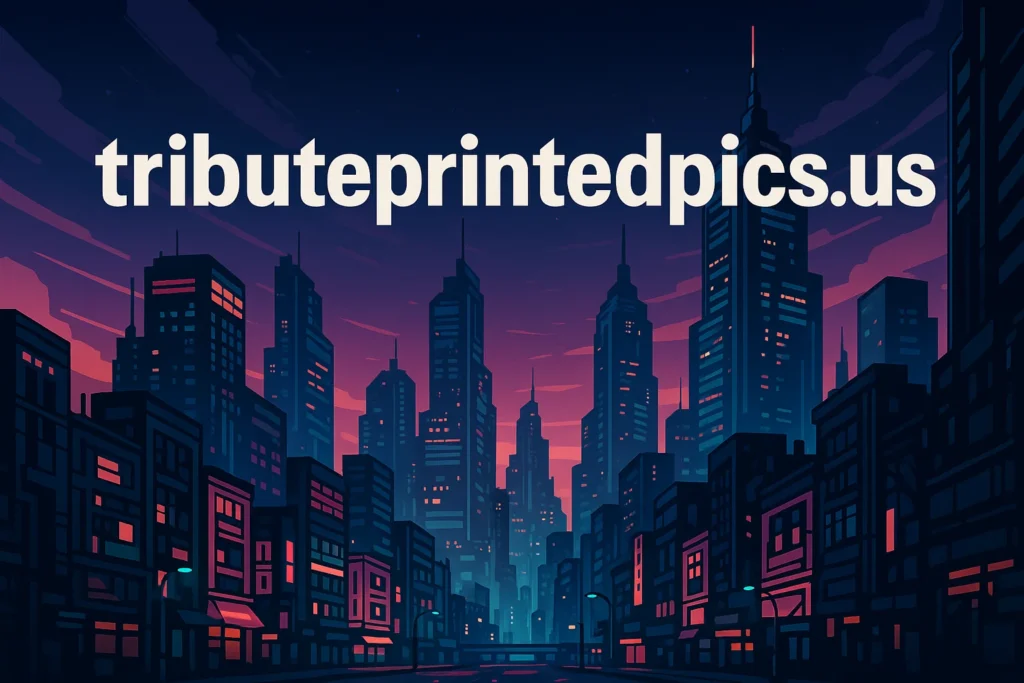Understanding Axurbain and Its Vision for Urban Innovation
Axurbain is more than just a concept—it’s a revolution in how cities are designed, built, and lived in. In an era defined by rapid growth, environmental change, and digital transformation, Axurbain seeks to redefine urban innovation through sustainable architecture, smart infrastructure, and community engagement. It aims to create cities that are intelligent, adaptive, and deeply human-centered. The focus isn’t just on modern construction or technology—it’s on people, livable urban environments, and the harmony between progress and nature.
The mission of Axurbain centers around merging green design with cutting-edge digital infrastructure. By blending eco-friendly materials, renewable energy, and data-driven planning, it offers a blueprint for future-proof city planning that balances growth with ecological responsibility.
The Core Philosophy of Axurbain
The philosophy behind Axurbain revolves around creating livable, inclusive, and sustainable cities. Every project aligns with principles of inclusive urbanism, ensuring that under-represented communities are part of development decisions.
- Promotes walkable neighbourhoods and walkable districts
- Encourages biodiversity in cities
- Reduces population density pressure through modular housing units
This vision recognizes that modern cities must address housing shortages, congestion reduction, and air quality improvement while enhancing the quality of city life. Axurbain’s approach focuses on building city ecosystems where home, work, and play exist in one ecosystem, improving social connection and accessibility.
Axurbain vs Traditional Urban Planning
Traditional urban planning often fails to adapt to the speed of change. Cities become rigid, polluted, and overcrowded. Axurbain, on the other hand, builds flexible, digital-first urban design frameworks. It integrates smart governance, digital twin city models, and decentralized systems that promote smarter decision-making.
This system values human potential in cities and emphasizes innovation hubs, public-private sector collaboration, and sustainable resource use. Instead of viewing a city as just infrastructure, Axurbain treats it as a living, breathing organism—one capable of learning, evolving, and responding to its people’s needs.
Smart Infrastructure and Sustainable Architecture
At its heart, Axurbain champions sustainable architecture and green living. Every design integrates smart infrastructure developments that improve mobility, energy, and connectivity. Urban planners under Axurbain’s framework prioritize:
- Energy-efficient buildings
- Green roofs and rain gardens
- Vertical farms and vertical gardens
- Modular construction and adaptive reuse
These ideas ensure every building contributes to energy efficiency, stormwater management, and zero-emission mobility. With this approach, cities can thrive without compromising the planet’s future.
The Role of Technology in Axurbain
Technology powers Axurbain’s smart city transformation. Through artificial intelligence (AI) and the Internet of Things (IoT), cities collect and analyze data to optimize performance. Digital infrastructure and smart grids allow for better traffic flow, e-mobility adoption, and reduced congestion.
Smart lighting systems, shared mobility platforms, and electric vehicle charging stations bring convenience while cutting carbon emissions. With data-driven traffic management and advanced digital governance, cities under Axurbain evolve continuously to meet citizen needs.
Community Engagement and Inclusive Design
No city thrives without its people. Axurbain puts community engagement at the center of every development. From neighbourhood revitalisation to the design of public spaces, citizens play an active role in shaping their environment. Public gathering areas, accessible public amenities, and local craftspeople in public art projects help make each city unique.
This inclusive design approach fosters a deep sense of belonging and ownership. It encourages citizen participation and supports neighbourhood-based living. Every decision whether about a park, housing, or mobility is made through dialogue between citizens, planners, and developers.
Green Design and Renewable Energy Integration
Sustainability defines Axurbain’s identity. By relying on renewable energy, smart infrastructure, and eco-friendly materials, it reduces environmental impact while enhancing quality of life. Cities powered by Axurbain feature solar energy networks, smart grids, and modular housing units designed for efficiency.
The strategy isn’t limited to reducing emissions; it promotes biophilic architecture, biodiversity in cities, and the restoration of natural habitats. This integration of technology and ecology ensures that urban innovation leads to both human and environmental well-being.
Economic Impact and Real-World Applications
Axurbain’s economic model focuses on long-term value rather than short-term profit. By promoting innovation hubs, mixed-use development, and digital governance, it attracts global investors and entrepreneurs. The result is new economic opportunities, from tech startups to green construction industries.
| Sector | Axurbain Impact |
|---|---|
| Real Estate | Boosts mixed-income neighbourhoods and sustainable construction |
| Transportation | Expands e-mobility and bike-sharing systems |
| Energy | Increases renewable energy and smart grid efficiency |
| Technology | Drives data-driven traffic management and AI integration |
These real-world applications show how Axurbain’s principles can enhance a city’s competitiveness while maintaining balance with nature.
Mobility Solutions and Smart Transport Systems
Mobility defines the heartbeat of a smart city. Under Axurbain, mobility solutions are designed around e-mobility, bike-sharing, and improved public transport. The goal is simple: reduce congestion, lower emissions, and enhance accessibility.
Cities adopt shared mobility platforms, zero-emission mobility options, and better connectivity between residential and commercial areas. This shift not only supports air quality improvement but also encourages walkability and citizen participation in sustainable commuting.
Building Livable and Climate-Resilient Cities
The fight against climate change starts with climate-resilient micro-cities. Axurbain emphasizes building adaptable communities that can withstand climate risks in cities through innovation and smart design.
Urban lifestyle transformation means integrating vertical gardens, modular housing, and smart infrastructure that adapts to weather extremes. Sustainable resource use, inclusive urbanism, and decentralized energy systems ensure long-term stability for growing populations.
Case Study – Axurbain in Action
In a European prototype city, the Axurbain model was tested through smart lighting systems, public transport innovation, and digital twin city models. The results showed a 20% increase in walkability and a 30% reduction in energy consumption.
These results demonstrate that Axurbain is not theory—it’s a functioning model of livable urban environments. The integration of data, AI, and human-centred design reshaped how people interact with their surroundings, leading to higher satisfaction and productivity.
Best Practices for Implementing Axurbain Projects
Cities looking to adopt Axurbain principles must follow a structured approach:
- Begin with comprehensive urban planning that integrates climate resilience.
- Engage local communities early for inclusive design.
- Utilize AI, IoT, and smart infrastructure developments for data-driven outcomes.
- Promote economic impact through innovation hubs and mixed-use projects.
Through collaboration and shared governance, these best practices make implementation smoother and more sustainable.
Challenges and Future Prospects
While Axurbain offers enormous potential, challenges remain. Funding, governance, and public adoption can slow progress. Integrating new digital infrastructure into aging cities also presents difficulties.
However, as more governments adopt eco-urban planning and smart governance systems, the future looks bright. Predictions suggest that by 2035, most major cities will follow models inspired by Axurbain—balancing livability, technology, and sustainability.
The Future of Urban Planning with Axurbain
Looking ahead, Axurbain represents the next phase of urban evolution. Its combination of technology, sustainability, and human values is already reshaping how we think about development. The path forward involves:
- Integrating digital-first urban design
- Promoting inclusive urbanism
- Strengthening collaboration between citizens and planners
This holistic model proves that smart infrastructure, green design, and community engagement can coexist, creating cities that truly serve their people.
Conclusion
Axurbain stands as a symbol of modern urban progress. By embracing renewable energy, adaptive reuse, and inclusive design, it bridges technology and humanity. Its real-world applications—from smart transport to energy-efficient buildings—show that the cities of tomorrow can be both intelligent and compassionate.
In the decades to come, the success of Axurbain will depend on collaboration, continuous innovation, and a shared commitment to sustainable growth. The dream of livable, climate-resilient, and smart cities is no longer distant—it’s already taking shape under this groundbreaking vision.
FAQs About Axurbain
H3: What is Axurbain?
Axurbain is a modern urban framework focused on sustainability, smart infrastructure, and community engagement for smarter, greener cities.
H3: How does Axurbain improve city life?
It enhances mobility, promotes renewable energy, and encourages inclusive urbanism to create better livable urban environments.
H3: Can Axurbain be applied in older cities?
Yes, its adaptive reuse and modular construction methods allow existing cities to integrate sustainable architecture gradually.
H3: What technologies power Axurbain?
It uses artificial intelligence (AI), IoT, smart grids, and digital twin city models to improve efficiency and governance.
H3: Why is Axurbain important for the future?
Because it offers a scalable solution to climate change, housing shortages, and congestion—helping cities remain sustainable and human-centered.


